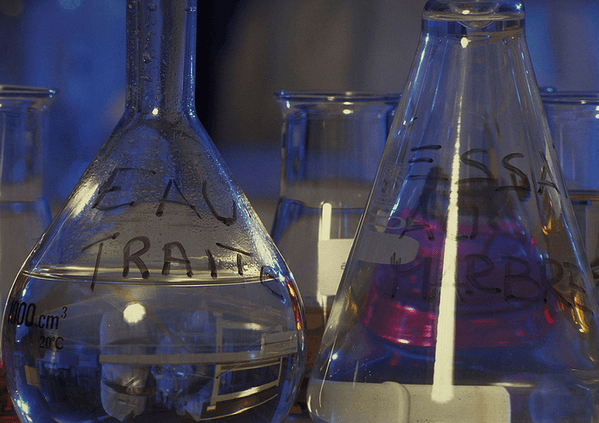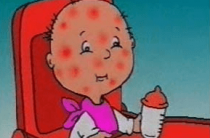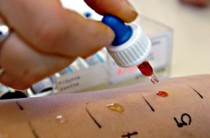In today's world, allergy is an increasingly common disease. Unfortunately, in the first place, children are involved in this process. This is facilitated by the fact that an allergic reaction is an ailment that is inherited.
But not only hereditary transmission contributes to the spread of allergies among children. Modern living conditions that involve: environmental degradation, the use of a large amount of household chemicals, as well as the food industry, which more and more often uses preservatives, flavor enhancers and other unnatural compounds.
Allergic diseases require certain diagnostic measures to make an accurate diagnosis. It is not always possible to accurately identify allergens by excluding certain foods or other substances that trigger allergies.
certain diagnostic measures to make an accurate diagnosis. It is not always possible to accurately identify allergens by excluding certain foods or other substances that trigger allergies.
Types of allergies in children
Food allergies are the most common form of food allergy in children. The modern food industry often uses substances such as flavors, sweeteners, dyes, and flavor enhancers to prepare food. Only the emerging immunity of the child is extremely sensitive to these substances and, in response to their ingress, can lead to the development of an allergic reaction.
Allergy to animal fur. The name of this disease does not correctly reflect the essence of the problem. Thus, an allergic reaction does not occur to the protein that makes up the wool, but to substances that are secreted by the animal's body.
Allergy to pollen. This type of allergy is characterized by a seasonal course of the disease.
An allergic reaction can occur both to the pollen of one plant species, and to the pollen of several plant species. For this type of allergy, the most characteristic are respiratory manifestations: sneezing, nasal congestion, redness of the eyes, etc.
Allergy to insect venom. The venom of insects such as wasps, bees and bumblebees has the greatest allergenic potential.
A dust allergy is an oversensitivity of the body to penetration along with the dust of a dust mite.
Symptoms in children
Allergy symptoms in a child are not the only method for diagnosing allergic conditions. Nevertheless, knowledge of the symptoms allows you to assess the patient's condition and prescribe the correct treatment. The doctor must be able to choose the right symptomatic treatment, because to date, a cure for this disease has not been found. All therapeutic tactics are based on the removal of allergy symptoms.
The main signs of the disease in children are:
- Dermatological manifestations: the child develops a rash, the skin begins to itch and peel off;
- Rhenitis, which is manifested by swelling of the nasal mucosa. These manifestations significantly complicate the breathing of the child.
- Symptoms similar to conjunctivitis, expressed in redness of the eyes and increased tearing;
- Blood test for allergens in children
- General blood analysis

A complete blood count should not be taken as a formal procedure. This is one of the most important procedures that allows you to assess the state of health of the patient as a whole. One of the most important functions of blood in the human body is transport. For this reason, the doctor must carefully examine the general blood counts of the child in order to draw a conclusion about the state of health.
Symptoms characteristic of allergies, in this case, are manifested by an increase in the number of eosinophils. Eosinophils are cells involved in the absorption and destruction of foreign substances. Although this is not the only method for making a diagnosis, nevertheless, a complete blood count can tell a lot about a child's health.
The use of a complete blood count allows you to direct the conduct of further diagnostic measures in the right direction.
Skin tests for allergies in children
This method is based on observing the reaction of the child's skin after the introduction of the alleged allergen. Despite the terrible name “scarification”, which literally translates as “scarring”, the incisions on the skin, for the introduction of the allergen, are made extremely shallow. Also, allergens can be injected subcutaneously using a special syringe.
After that, the condition of the skin at the injection sites of the allergen is monitored for several days. Although, often the test gives an instant result, observation should be carried out for a longer time. This is explained by the fact that the speed of the immune response to the ingestion of an allergen is a strictly individual value. In one child, it can develop within a few seconds, in others - within a few days.
The presence of an allergic reaction is diagnosed on the basis of an examination of the condition of the skin, in places of scarification. With the development of allergies, blisters form at the injection sites of the allergen, which are accompanied by redness and peeling of the skin.
Contraindications:
An acute form of an allergic reaction.
If the child's body is prone to an acute course of allergies, then at this moment, scarification tests are not carried out so as not to cause clinical manifestations of allergies, which can lead to the development of a fatal outcome. Acute respiratory viral infections
Prolonged use of topical corticosteroids, which can accumulate in the skin, preventing the development of an allergic reaction
Before using a scarification test, in no case should you use corticosteroids and antihistamines, since these drugs neutralize the skin manifestations of allergies. Skin tests should be taken in areas that are not affected by dermatological manifestations. In acute hives, an allergic reaction can spread throughout the body.
It must be remembered that despite all the precautions, an allergen enters the child’s body during skin tests, therefore, during the time of the test, parents need to carefully monitor the child’s condition. Just in case, it is necessary to instruct on the use of a special kit to relieve acute manifestations of allergies (Quincke's edema and anaphylactic shock).
Blood test for allergens in a child
Blood test for total immunoglobulins
Immunoglobulin E is a type of special antigen proteins. Its task is to bind to foreign molecules and provoke the development of an immune response. When an allergen hits, to which the patient's immunity is hypersensitive, it binds to immunoglobulin E, which is a signal for the onset of an allergic reaction. An increase in immunoglobulin E in the blood is also a sign of the appearance of helminthine invasion, since this protein is involved in protecting our body from parasitic invasions.
This test is safe because the diagnosis does not require the patient to be in direct contact with allergens. Detection of an elevated level of IgE in the patient's blood may indicate both the presence of allergic reactions and helminthic invasions. To exclude the second option, it is necessary to conduct a special test for the determination of helminthins.
However, the level of total immunoglobulin is not always indicative of allergies. So, about 30% of allergic reactions pass without increasing the level of this protein in the blood.
A blood test for special antibodies is the most accurate and safe method for diagnosing allergic reactions.
Indications for a blood test in children
- Dermatitis, bronchial asthma, food allergy, allergy to dust, plant pollen, insect bites, manifestations of conjunctivitis in children, allergic rhinitis;
- gilmentine invasions;
- For the early detection of allergies in a child whose parents suffer from allergies.
Prevention for a child
The first preventive method is the elimination of the allergen. Without it, the occurrence of an allergen is simply impossible. Unfortunately, this is not always the case. But nevertheless, it is necessary, if possible, to distance yourself from the source of the allergy as much as possible. If a child is allergic to plant pollen or dust, then it is necessary to do wet cleaning as often as possible.
It is mandatory to install special nets on the windows, which have a small cross section and screen out a significant part of the allergens. Remember that a child's body is even more sensitive to improper treatment than an adult's body. Therefore, we are categorically against self-treatment. Any diseases should be treated exclusively by professionals.















